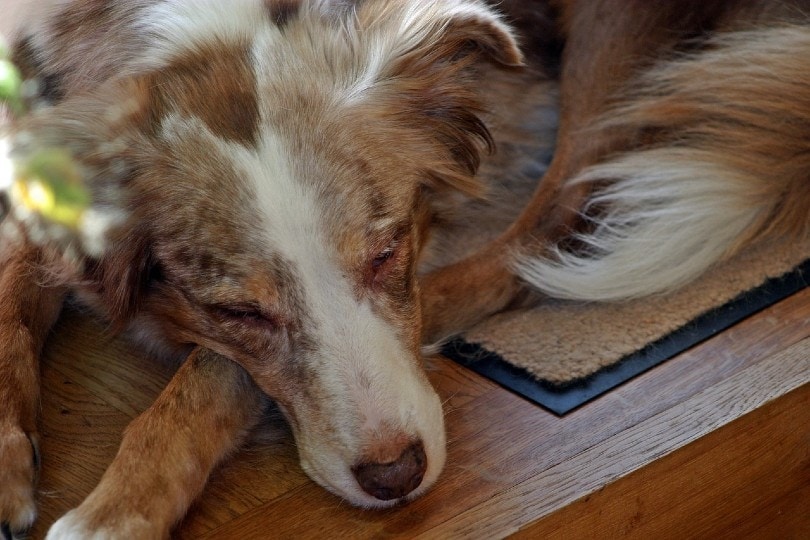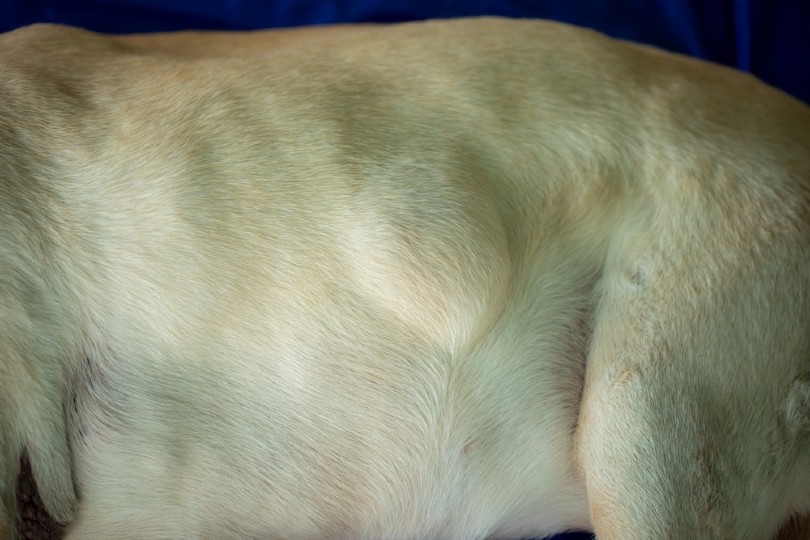Click to Skip Ahead
Lipomas are common in dogs. They are small, noncancerous growths that normally form in the tissue just under the skin but can also form deeper. Though they are more common in some breeds, any canine can develop a lipoma. If you have a dog, it is not unlikely that you may have to deal with a lipoma in the future.
The removal of a lipoma can come with various costs depending on several factors. If you are curious about what those are, keep reading to learn more.
The Importance of Lipoma Surgery
While removing a lipoma growth is not always necessary, it depends on your vet’s diagnosis. If a lipoma growth is not removed when it should be, there can be serious consequences.
Lipomas will not disappear on their own, which means there is always a possibility of side effects if the lipoma is not removed. If you decide not to have a surgical procedure, you will need to monitor the lipoma in case the growth worsens and needs to be removed.
A potential effect of a lipoma includes extreme discomfort for your dog. Another potential issue is that your dog’s tissue around the lipoma could die, causing greater discomfort and further problems. More severely, if the lipoma is located near the heart, it could lead to death. Although, in this instance, your vet would have certainly opted for the removal of the growth.

How Much Does Lipoma Surgery Cost?
Several factors may influence the cost of lipoma removal surgery: the number of growths, the location of the growths, and your dog’s age, breed, and health.
The number of growths will play a huge role in determining price. Typically, removal will cost around $200 to $600 per lipoma. The location of the lipoma will raise the price if the site is difficult to reach. For instance, if the lipoma has developed on an internal organ, the price will be much higher than if it had formed just below the skin. Deeper, harder-to-reach locations can hike the price up to $1,000 per mass, at a minimum.
The age and breed of your dog will also play a role in determining the price. Likewise, the health of your dog is an essential factor. Surgery may be more difficult if your dog is overweight or otherwise unhealthy. This will lead to an increase in price that will vary depending on where you seek treatment.
Additional Costs to Anticipate
At a minimum, you will need to expect costs for veterinary exams and a biopsy diagnosis. Biopsies can range from $30 to $70 and are usually covered by pet insurance preventative care plans.
For more difficult lipomas, the diagnosis will be more complex and expensive. Extra costs may include an ultrasound, an X-ray, or a CT scan for lipomas beneath the superficial tissues. You can expect a scan like this to cost around $150 or more.
There will likely be other itemized fees to consider, such as blood work, anesthesia, and follow-up vet exams.
Top Rated Pet Insurance Companies
How Long Should Your Dog Rest?
After a lipoma removal surgery, it is vital to ensure that your dog rests. No matter how invasive the surgery, your dog will need at least 10–14 days of rest.
You should monitor your dog to watch out for any post-surgery complications. Pay special attention to the incision site, where fluid buildup may occur beneath the skin. If too much fluid builds up, it may leak out of the incision and cause issues.
Likewise, you will want to watch your dog for any signs of infection. Some signs of infection include redness, swelling, discharge, and pain. If the stitches are prematurely falling out, that could be another sign of infection or something else.
Call your vet if your dog has not eaten, urinated, or defecated 12–24 hours after the surgery.

Does Pet Insurance Cover Lipoma Surgery?
In most circumstances, pet health insurance should cover your dog’s lipoma removal surgery. It is usually grouped under illnesses in most accident and illness coverage plans, so if you have pet health insurance, you can rest easy knowing that a significant financial burden will be lifted.
However, there are instances where pet insurance may not cover lipoma surgery. If you enroll in an insurance plan after your dog is diagnosed with lipoma, it will likely be classified as a pre-existing condition. Most pet policies do not cover pre-existing conditions.
So, if you suspect that a lipoma removal surgery may be in your future, you may want to enroll in a pet health insurance plan before any diagnosis.
What To Do For Your Dog During Recovery
During recovery, ensure your dog does not lick the incision site. The best way to keep your dog from licking the incision is to put a cone over its head. Generally speaking, lipoma removal surgery does not come with many side effects. The skin may be irritated or inflamed, so watch it and ensure it does not progress to an infection. If any anesthesia was used, there might be some residual nausea.
[elementor-template id=”174909″]Conclusion
It can be scary to think that there is a growth on your canine friend, especially when the growth comes with a huge price tag. Thankfully, lipomas are generally harmless, are easily removed, and can be covered by most pet health insurance plans. If you see a suspicious lump on your dog, reach out to your vet immediately. Taking an active role in your dog’s health is the best way to ensure they live a long and happy life!
See also:
- Histiocytoma in Dogs? What It Is, Causes & Signs (Vet Answer)
- Buying Dog Food In Bulk: Benefits and Risks
Featured Image Credit: Phatthanit, Shutterstock











